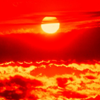
'Suntelligence' Survey Shines Light on Sun Ignorance, Myths
Half the battle in knowing how to properly protect oneself from skin cancer is being able to separate fact from fiction. Unfortunately, according to the American Academy of Dermatology, some myths about tanning and sun protection are deep rooted and could mislead people into thinking that tanning is safe -- when, in reality, nothing could be further from the truth. Now, a new AAD survey sets the record straight on some of the most common myths and what people believe to be true about tanning and sun protection.
The "Suntelligence: How Sun Smart is Your City?" online survey polled more than 7,000 adults nationwide to determine their knowledge, attitudes, and behaviors toward tanning, sun protection, and skin cancer detection. Twenty-six cities were ranked based on respondents' answers to several questions in each category.
"Our survey showed that despite our repeated warnings about the dangers of UV exposure and the importance of proper sun protection, many people could not correctly answer true/false statements on the subject," said dermatologist Zoe D. Draelos, M.D., FAAD, consulting professor at Duke University School of Medicine, Durham, N.C. "Identifying what areas people need to improve their understanding of tanning and sun protection allows dermatologists to concentrate our educational efforts in these areas to increase knowledge, which could eventually help reduce the incidence of skin cancer in future generations."
The survey revealed a number of myths people mistakenly believe as facts. For example, only about one-third (35 percent) of the more than 7,000 respondents correctly answered "false" to this statement: Some types of ultraviolet (UV) rays are safe for your skin. In fact, though, as AAD notes, sunlight consists of two types of harmful rays: ultraviolet A (UVA) rays and ultraviolet B (UVB) rays. UVA rays (which pass through window glass) penetrate deeper into the thickest layer of the skin known as the dermis. UVA rays can cause suppression of the immune system, which interferes with the immune system's ability to protect a person against the development and spread of skin cancer. UVB rays are the sun's burning rays (which are blocked by window glass) and are the primary cause of sunburn.
"Quite simply, all forms of UV exposure, whether from natural sunlight or artificial light sources found in tanning beds, are unsafe and are the No. 1 preventable risk factor for skin cancer," says Draelos.
Only 48 percent of respondents knew this statement was false: Getting a base tan is a healthy way to protect skin from sun damage. As Draelos notes, a tan is a sign of damage to the skin from UV radiation. Every time a person tans, the skin becomes damaged and this damage accumulates over time. This accumulated damage, in addition to accelerating the aging process, also increases a person's risk for all types of skin cancer. "A base does very little to protect your skin, and since tanning damages the skin, getting a base tan could do more harm than good," Draelos says. "The only way to prevent sunburn is to protect your skin through using sunscreen, wearing protective clothing, and seeking shade."
The majority of respondents (63 percent) knew that it is not smarter to tan indoors using a tanning bed, but only 21 percent knew that a sunscreen with a Sun Protection Factor (SPF) of 30 does not provide twice the protection as an SPF of 15. AAD says that, contrary to popular belief, UVB protection from the sun's burning rays does not actually increase proportionately with a designated SPF number. For example, an SPF of 30 screens 97 percent of UVB rays, whereas an SPF of 15 screens 93 percent of UVB rays, and an SPF of 2 screens 50 percent of UVB rays.
Draelos also notes that inadequate application of sunscreen may result in a lower SPF than the product contains. "Regardless of the SPF you use, wearing sunscreen should not provide a false sense of security about protection from UVB exposure," she says. "No sunscreen can provide 100 percent UVB protection, but using a higher SPF provides greater UVB protection than a lower SPF. It's important to remember sunscreen must be reapplied regularly and be part of an overall sun-protection plan that includes hats, sunglasses, protective clothing, and seeking shade."
The "Suntelligence" survey was conducted for AAD by RH Research of Chicago from January 12 to January 31, 2010. A total of 7,116 respondents completed the online survey; more than 200 completes were conducted in each of the 26 selected MSAs (metropolitan statistical areas), and an additional 1,123 completes were conducted in the U.S. outside of the MSAs. The survey's margin of error was ±1.2 percent for national data and ±6.9 percent for results stratified by MSA.
In the city rankings, Hartford, Conn.; Salt Lake City; and Denver ranked No. 1, 2, and 3, respectively, while Cleveland, Chicago, and Pittsburgh fell to the bottom of the sun-smart spectrum with rankings of 24, 25, and 26, respectively. Key highlights of the survey and a complete listing of the 26 MSA finishing spots are available at www.aad.org/media.